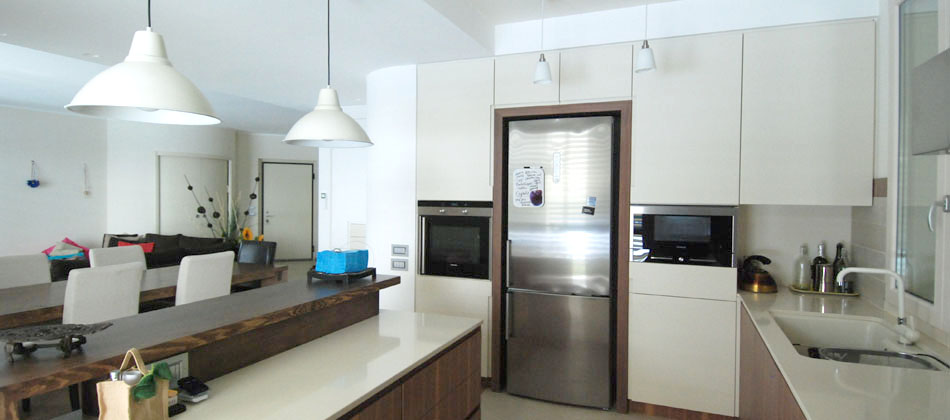Living comfort
Different ways of house assessment have spread over the last few years thanks to a greater sensitivity to energy saving and respect for the environment. The introduction of the energy efficiency class evaluation, which has implied an epoch-making revolution in this sector, is the first step towards a philosophy that brings to the fore the individual’s psychophysical well-being within their own home.
Nowadays people perceive their homes as places of serenity and peacefulness where they hope to spend some time far from everyday stress. Therefore, house quality is by now a very important factor which cannot be ignored in the construction phase of a new house.
High values of comfort can be reached through the combination of some fundamental elements:
- Place : geographical position and residential area of green, urban or industrial type;
- Building : typology of structure, interior finishes (materials, colours, lights) and proportion among rooms;
- Efficiency : heating and electricity systems, consumptions and the relative energy class;
- Personal emotions : the wish of living in a house according to one’s own tastes and needs.
 A prefabricated wooden house, made according to the principles of green building, represents a much more relaxing ambience for people who daily live in it. Wood creates a natural well-being and welcoming atmosphere arousing olfactory and visual sensations which masonry cannot give.
A prefabricated wooden house, made according to the principles of green building, represents a much more relaxing ambience for people who daily live in it. Wood creates a natural well-being and welcoming atmosphere arousing olfactory and visual sensations which masonry cannot give.
By definition, living comfort is the condition of well-being within a house in relation to four factors: temperature, air humidity, acoustics and luminosity.
Temperature and air humidity – Wood, thanks to its thermal inertia, gives an excellent performance in terms of insulation. The structures made with our constructive system, of which wood is the only used material, can effectively counteract the negative effects caused by sudden temperature swings that are easily found in traditional buildings.
In the construction of a building with a high energy performance, great importance is given to details such as external thermal insulation which has to hermetically seal the building casing to prevent the formation of thermal bridges with a consequent 20-30% inefficiency.
The adjustment of humidity within an apartment is equally important as it affects health significantly. A house with a high humidity value is an ideal place for the development of bacteria and moulds and creates the conditions for a definitely unhealthy environment. A low humidity value, instead, promotes the accumulation of electrostatic charges especially on synthetic materials and varnished surfaces (attraction of dust particles or slight electric shocks perceived on door handles).
The achievement of optimal temperature and humidity values results in the so-called hygrothermal well-being.
Acoustics - Being protected from noise sources coming from outside (traffic, industrial activities, etc.) and inside the building (lifts, hydraulic systems, etc.), means making one’s home harmonious and relaxing. In nowadays world, sounds, acoustic signals and stimulations of any kind are present all day long and sometimes even in the night. So, there is a growing need of calm and quiet with the consequent reduction or elimination of all that is annoying and irritating to our ears.
The structure of our walls, totally built with solid elements, guarantee considerable lessening of dB values and allow to respect the strictest acoustic requisites. Such performances can be further enhanced through the adoption of thermal insulating materials and an accurate study of some aspects: building orientation, division of space, separation of quit rooms from the noisy ones.
The careful and scrupulous implementation of the above-mentioned adjustments can transform a house into a sheer oasis of peace and privacy.
 Luminosity - A correct and accurate design should pay attention to the orientation of walls, the surface of windows and the use of shadowing devices in order to guarantee the right quantity/absence of light both in daytime and night-time, which is too often disrupted by artificial lighting.
Luminosity - A correct and accurate design should pay attention to the orientation of walls, the surface of windows and the use of shadowing devices in order to guarantee the right quantity/absence of light both in daytime and night-time, which is too often disrupted by artificial lighting.







